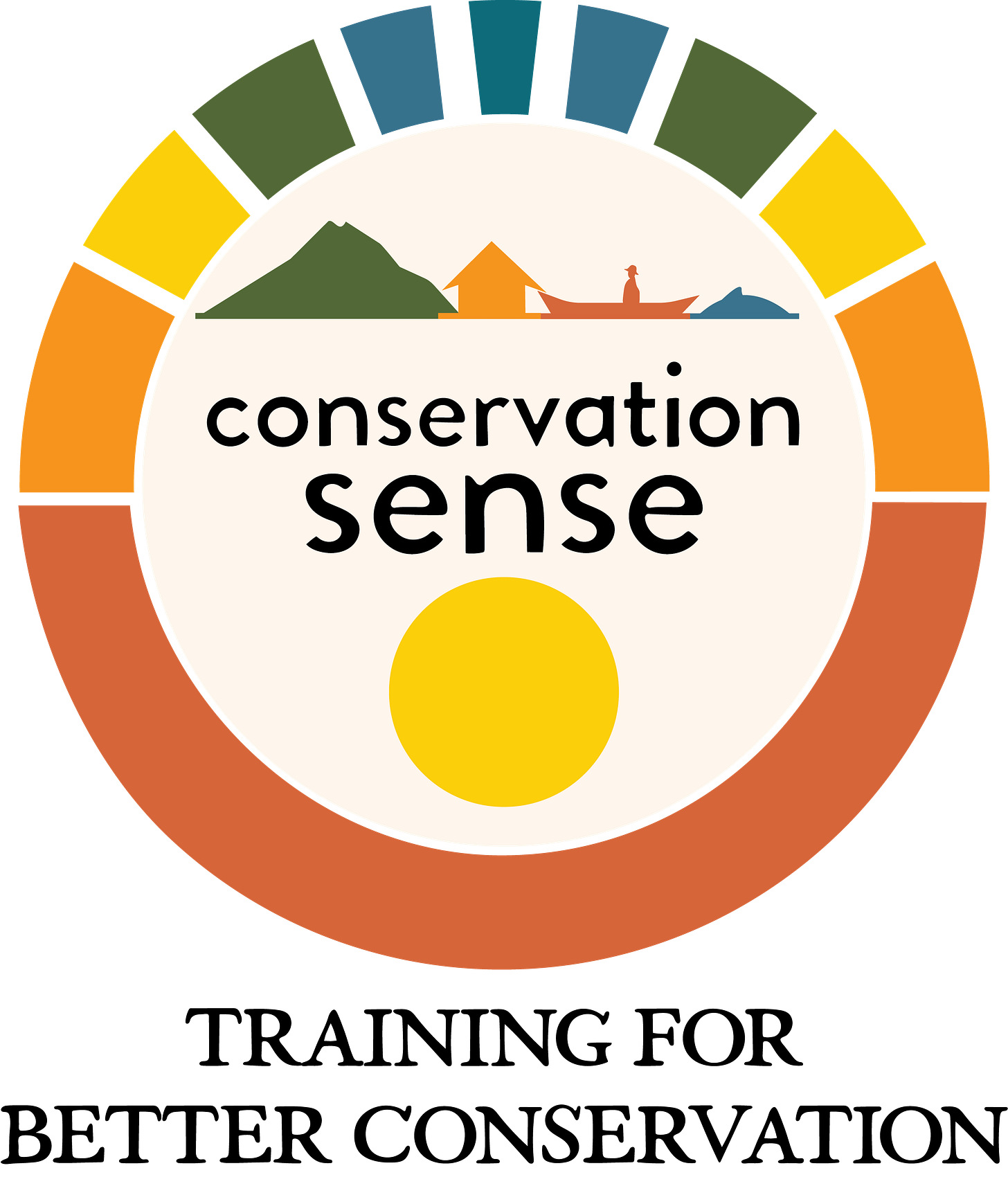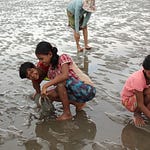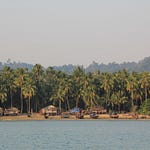Note: This is the beginning of my "Conservation Sense" series, a feature of my Conservation Realist newsletter. This series is more focused on building awareness and skills for better conservation, and serves as a preview of my more in-depth Conservation Sense trainings that will be offered later in 2025. See the Conservation Sense tab for easy access to the whole series.
Conservation is often conceived of as being driven by natural scientists, particularly the rugged explorer type (a la National Geographic) braving the elements to save species in the most remote and exotic of locations. I strongly suspect that a lot of conservation scientists themselves still entertain this notion. At least, the ways in which mainstream conservation functions, and who drives and dominates it, suggest that natural science is the primary engine of conservation.
I believe that this skewed narrative is harmful to conservation in the real world.
One of the main goals of Conservation Sense is to calibrate our sense of what conservation is, and who does it, and how. So let's begin, first by examining the notion of "human dimensions" in conservation.

What are "human dimensions" of conservation?
Specifically - what is it that comes to mind when you think of the "human dimensions" of conservation? Common responses include: economics; livelihoods; interviews; policy; behavior change and marketing.
If those were your responses, try to think a bit deeper. Think about "humanity." Think about all the different ways that humans interact with, and are impacted by, conservation. Remember, you're also a human. Let that reminder guide you into some empathy as you consider the human components of conservation.
What aren't "human dimensions" of conservation?
Now, *this* is the question.
What about conservation is *not* related to humans?
One might say the animals or plants that we're trying to conserve, or the very professional and science-y research conducted on those organisms or their ecosystems.
Okay. But then:
Why are those organisms and ecosystems being studied in the first place?
Who is studying them?
Who is driving impacts that are potentially threatening them?
The answer: humans.
Conservation research is driven by what *humans* deem interesting and of value for conservation, i.e., worth saving
Natural scientists are humans, too - with biases (yes, even the scientific method is not bias-proof) and values
Chances are, organisms are threatened from human activities, so that's another way that humans are the reason why a given organism or ecosystem end up as study subjects for humans to study
Conservation is a human process
When we say "human dimensions" of conservation, it implies that humans can be extricated from conservation somehow. But of course that's nonsense. (Of course, the term has utility in that it’s how many natural scientists have learned to think about human factors in conservation, and that’s why I still occasionally, if begrudgingly, use it).
The term "human dimensions" has often been used as, in my opinion, a somewhat lazy gesture to suggest "hey, see, we're including humans in our conservation work!" without actually restructuring how we think about and implement conservation. It's like an optional add-on, a neat unit that fits within a discreet label. Most conservation conferences I've attended will have plenaries full of earnest statements about "conservation is about people!" while the sessions and presentations following will feature very little meaningful work on people, or the complex, inextricably human processes that define conservation.
This has been getting a bit better, but not fast enough.
So, I present this statement on conservation as the working definition for the rest of this series. Please don't be too picky about it - I came up with it at home, alone, without a tortuous working group process:
Conservation aims to protect some part of nature (species, habitats, ecosystems, and related ecosystem services) against threats. It is a human process, shaped by current and historic human values, social dynamics, social-economic-political-cultural context, institutions and structures, and rights and power. It is a social justice issue.
Another way to present this is to look at four basic questions about conservation:
Why? --> Human values, human benefits
How? --> Human actions (research, decision making, implementation)
By whom? ---> Humans
For whom? --> Humans who care about the target species/resources
In our thinking about "conservation as a human process," it's important to now think: which humans, specifically, are in which roles, and why? Going back to the answers to the 4 questions:
Human values, human benefits --> Whose values are the priority? Whose needs and interests "matter" more?
Human actions (research, decision making, implementation) --> Who is in a position, or given access to the power and resources, to make decisions and implement actions?
Humans as the actors --> Who is included, who isn't included, and why?
For humans who care about the target species/resources --> Who gains, who loses, and which takes priority?
Some ways of thinking about this human process
Compartmentalization has its place. To think of and work with the dazzling array of human interactions involved in conservation, it's of course necessary to impose artificial conceptual boundaries to divide things into more manageable chunks. Bite-sized human dimensions?
I often teach three different ways of looking at conservation from a human-centered lens. Again, don't be too picky - I'm not claiming to be some great theorist, and there are plenty of great frameworks out there that are more sophisticated than some of what I'll present, but these three have proven helpful in communicating to students:
Social-ecological systems, of course - I'd call this "human-centered conservation 101," and Elinor Ostrom's foundational work on this framework for exploring how resources and actors, and the systems in which they exist, interact is an accessible way for natural scientists to see the human components of the ecosystems in which they work. In over-simplified terms: Who are the actors, and what are their roles and actions, that interact with a natural resource system? (note: there are several great papers by Ostrom and colleagues on this - contact me if you don’t have access).
Conceptualization of conservation as based on human values and decisions: What should be saved (what is worthwhile? what is good - function, or intrinsic value? what are we saving it for?)? Why do we want to save it? And what are acceptable measure for saving it?
Dynamics and interactions in the conservation process: Who defined and maintains the system of power and resources in which conservation must operate, and how is this system maintained or adapted, and over what time scales? Within this system: how are resources and power allocated, and why? And how do these shape the processes that occur, and what dynamics are at play in these processes?
A reference that gets to some similar points, and more, in a more thorough manner: Larsen 2011. Critical systems thinking for the facilitation of conservation planning in Philippine coastal management. Systems Research and Behavioral Science, 28(1). (Contact me if you don’t have access).
Conservation isn't *that* special
We like to think we're special. We get to travel to spectacular places, sometimes places that the ordinary human will never be able to go. We get to wear the badge of "saving the planet!" We feel elevated by the worthy cause of protecting nature.
And that's all fine. I indulge in it, too. But remember: we're still people! And we're still working in an inherently *peopled* process. So in that sense, we're not so different from most (all?) other sectors out there in that we need to know how to work with people. The fact that we are striving to save nature does not mean we exempt from that, any more than public health or humanitarian work would be.
As such, any information on how to better work as people who are working with people - and generally how to better design and facilitate human-centered processes - is relevant to conservation. There are many fields from which to learn, including fields of study that are specifically concerned with human interactions and organization.
And we need to learn all we can, because human processes are messy! They're complex, time-consuming, sensitive, seemingly nonlinear, and incompatible with most project planning and funding models.
In that way, we're not exceptional - there are many sectors that must figure out how to work with humans in a productive, ethical, equitable manner. In this series, I want to bring some "big picture" perspectives about how we, as humans, can better understand and conduct the very human process of conservation.
We can and must learn and integrate better ways of navigating this process for more ethical, equitable, and effective conservation. (Imagine that read in a David Attenborough voice. In fact, just imagine all of this in his voice).
Next up: examining "natural science privilege." It's a fun one!













Share this post